Posts Tagged Svadhistana
Some Results of Initiation
Posted by Kim Graae Munch in Buddhism, Esoterics, Indian esoteric, Rosicrucianism on May 19, 2015
The following text extracts is from “Some Results of Initiation” from the book “Knowledge of the Higher Worlds and its Attainment” by Rudolf Steiner.
It’s one of the best descriptions on the subject, on what each chakra is and does in us at our development, and how our life influences the chakras.
This is not an incentive to use some of the methods that are elsewhere in the book, most readers of this have no need for these methods, fate are giving us what we need, only one method may be of interest to all, and that is contemplation, but most will intuitively use it, as a ‘remembrance’ from earlier lives.
Lotus Flowers – Chakras
The further the student advances in his inner development, the greater will be the organic differentiation introduced into his astral body. The latter is confused and undifferentiated in the case of a person of undeveloped inner life; yet the clairvoyant can perceive even the unorganized astral body as a figure standing out distinctly from its environment. It extends from the centre of the head to the middle of the physical body, and appears like an independent body possessing certain organs.
These organs, now to be considered, are apparent to the clairvoyant near the following parts of the physical body:
- the first between the eyes;
- the second near the larynx;
- the third in the region of the heart;
- the fourth in the so-called pit of the stomach;
- the fifth and sixth are situated in the abdomen.
These organs are technically known as wheels, chakrams or lotus flowers. They are so called on account of their likeness to wheels or flowers, but of course it should be clearly understood that such an expression is not to be applied more literally than when the lungs are called wings. Just as there is no question of wings in the case of lungs, so, too, in the case of the lotus flowers, the expression must be taken as a figurative comparison.
 In undeveloped persons these lotus flowers are dark in colour, motionless and inert. In the clairvoyant, however, they are luminous, mobile, and of variegated colour. Something of this kind applies to the medium, though in a different way; but this question need not here be pursued.
In undeveloped persons these lotus flowers are dark in colour, motionless and inert. In the clairvoyant, however, they are luminous, mobile, and of variegated colour. Something of this kind applies to the medium, though in a different way; but this question need not here be pursued.
Now when the student begins his exercises, the lotus flowers become brighter; later on they begin to revolve. When this occurs, clairvoyance begins. For these flowers are the sense organs of the soul, and their revolutions express the fact that the clairvoyant perceives supersensibly. No one can perceive the supersensible until he has developed his astral senses in this way.
Thanks to the spiritual organ situated in the vicinity of the larynx, it becomes possible to survey clairvoyantly the thoughts and mentality of other beings, and to obtain a deeper insight into the true laws of natural phenomena.
The organ situated near the heart permits of clairvoyant knowledge of the sentiments and disposition of other souls. When developed, this organ also makes it possible to observe certain deeper forces in animals and plants.
By means of the organ in the so-called pit of the stomach, knowledge is acquired of the talents and capacities of souls; by its means, too, the part played by animals, plants, stones, metals, atmospheric phenomena and so on in the household of Nature, becomes apparent.
The organ in the vicinity of the larynx has sixteen petals or spokes; the one in the region of the heart twelve, and the one in the pit of the stomach ten.
Thanks to the spiritual organ situated in the vicinity of the larynx, it becomes possible to survey clairvoyantly the thoughts and mentality of other beings, and to obtain a deeper insight into the true laws of natural phenomena.
The organ situated near the heart permits of clairvoyant knowledge of the sentiments and disposition of other souls. When developed, this organ also makes it possible to observe certain deeper forces in animals and plants.
By means of the organ in the so-called pit of the stomach, knowledge is acquired of the talents and capacities of souls; by its means, too, the part played by animals, plants, stones, metals, atmospheric phenomena and so on in the household of Nature, becomes apparent.
The organ in the vicinity of the larynx has sixteen petals or spokes; the one in the region of the heart twelve, and the one in the pit of the stomach ten.
Now certain activities of the soul are connected with the development of these organs, and anyone devoting himself to them in a certain definite way, contributes something to the development of the corresponding organs.
The Sixteen Petalled Lotus – The Throat Chakra

The 16-petalled Lotus
In the 16-petalled lotus, eight of its sixteen petals were developed during an earlier stage of human evolution, in a remote past. Man himself contributed nothing to this development; he received them as a gift from nature, at a time when his consciousness was in a dull, dreamy condition.
At that stage of human evolution, they were in active use, but the manner of their activity was only compatible with that dull state of consciousness. As consciousness became clearer and brighter, the petals became obscured and ceased their activity.
Man himself can now develop the remaining eight petals by conscious exercises, and thereby the whole lotus flower becomes luminous and mobile. The acquisition of certain faculties depends on the development of each one of the sixteen petals.
Yet, as already shown, only eight can be consciously developed; the remainder then appear of their own accord.
The development proceeds in the following manner. The student must first apply himself with care and attention to certain functions of the soul, hitherto exercised by him in a careless and inattentive manner. There are eight such functions:
– The first is the way in which ideas and conceptions are acquired. In this respect people usually allow themselves to be led by chance alone. They see or hear one thing or another and form their ideas accordingly. While this is the case, the sixteen petals of the lotus flower remain ineffective. It is only when the student begins to take his self-education in hand, in this respect, that the petals become effective. His ideas and conceptions must be guarded; each single idea should acquire significance for him; he should see in it a definite message instructing him concerning the things of the outer world, and he should derive no satisfaction from ideas devoid of such significance. He must govern his mental life so that it becomes a true mirror of the outer world, and direct his effort to the exclusion of incorrect ideas from his soul.
– The second of these functions is concerned with the control of resolutions. The student must not resolve upon even the most trifling act, without well-founded and thorough consideration. Thoughtless and meaningless actions should be foreign to his nature. He should have well-considered grounds for everything he does, and abstain from everything for which no significant motive is forthcoming.
– The third function concerns speech. The student should utter no word that is devoid of sense and meaning; all talking for the sake of talking draws him away from his path. He must avoid the usual kind of conversation, with its promiscuous discussion of indiscriminately varied topics. This does not imply his preclusion from intercourse with his fellows. It is precisely in such intercourse that his conversation should develop to significance. He is ready to converse with everyone, but he does so thoughtfully and with thorough deliberation. He never speaks without grounds for what he says. He seeks to use neither too many nor too few words.
– The fourth is the regulation of outward action. The student tries to adjust his actions in such a way that they harmonize with the actions of his fellow-men and with the events in his environment. He refrains from actions which are disturbing to others and antagonistic to his surroundings. He seeks to adjust his actions so that they combine harmoniously with his surroundings, with his position in life, etc. When an external motive causes him to act, he considers how he can best respond. When the impulse proceeds from himself he weighs with minute care the effects of his activity.
– The fifth function includes the management of the whole of life. The student endeavours to live in conformity with both Nature and spirit. Never over-hasty, he is also never indolent. Excessive activity and laziness are equally alien to him. He looks upon life as a means for work and disposes it accordingly. He regulates his habits, the care of his health, etc., in such a way that a harmonious whole is the outcome.
– The sixth is concerned with human endeavour. The student tests his capacities and proficiency, and conducts himself in the light of such self-knowledge, He attempts nothing that is beyond his powers, but seeks to omit nothing that is within their scope. On the other hand he sets before himself aims that coincide with the ideals and the great duties of a human being. He does not mechanically regard himself as a wheel in the vast machinery of mankind, but seeks to comprehend the tasks of his life, and to look out beyond the limit of the daily and trivial. He endeavours to fulfil his obligations ever better and more perfectly.
– The seventh deals with the effort to learn as much from life as possible. Nothing passes before the student without giving him occasion to accumulate experience which is of value to him for life. If he has performed anything wrongly or imperfectly, he lets this be an incentive for repeating the performance later on, but this time rightly and perfectly. When others act, he observes them with the same end in view. He tries to gather a rich store of experience, and ever to turn to it for counsel; nor indeed will he ever do anything without looking back on experiences from which he can derive help in his decisions and affairs.
– Finally, the eighth is that the student must, from time to time, glance introspectively into himself, sink back into himself, take himself carefully to task, form and test the fundamental principles of his life, run over, in his thoughts, the sum total of his knowledge, weigh his duties, reflect upon the content and aim of life and so on.
The better the student’s thoughts and speech harmonize with the processes in the outer world, the more quickly will he develop this faculty. Whoever thinks and speaks what is contrary to truth destroys something in the bud of his 16-petalled lotus. Truthfulness, uprightness and honesty are in this connection creative forces, while mendacity, deceitfulness and dishonesty are destructive forces.
The student must realize, however, that actual deeds are needed, and not merely ‘good intentions’. If I think or say anything that does not conform with reality, I kill something in my spiritual organs, even though I believe my intentions to be ever so good. It is here as with the child which needs must burn itself when it falls into the fire, even though it did so out of ignorance.
The regulation of the above activities of the soul in the manner described, causes the 16-petalled lotus to ray forth in glorious hues, and imparts to it a definite movement. Yet it must be noted that the faculty of clairvoyance cannot make its appearance before a definite degree of development has been attained. It cannot appear so long as it is irksome for the student to regulate his life in this manner. He is still unfit, so long as the activities described above are a matter of special pre-occupation for him. The first traces of clairvoyance only appear when he has reached the point of being able to live in the specified way, as a person habitually lives. These things must then no longer be irksome, but must have become a matter of course. There must be no need for him to be continually watching himself, and urging himself on to live in this way. It must all become a matter of habit.
Now this lotus flower may be made to develop in another way by following certain other instructions. But all such methods are rejected by true Spiritual Science, for they lead to the destruction of physical health and to moral ruin. They are easier to follow than those here described. The latter, though protracted and irksome, lead to the true goal and cannot but strengthen morally.
The distorted development of a lotus flower results not only in illusions and fantastic conceptions, should a certain degree of clairvoyance ensue, but also in errors and instability in ordinary life. Such a development may be the cause of timidity, envy, vanity, haughtiness, wilfulness and so on in a person who hitherto was free from these defects. It has already been explained that eight of the sixteen petals of this lotus flower were developed in a remote past, and that these will reappear of themselves, in the course of esoteric development.
Faulty training may easily result in the reappearance of the earlier petals alone, while the new petals remain stunted. This will ensue especially if too little logical, rational thinking is introduced into the instruction. It is of supreme importance that the student should be a rational and clear-thinking person, and of further importance that he should practice the greatest clarity of speech. People who begin to have some presentiment of supersensible things, are apt to wax talkative on this subject, thereby retarding their normal development. The less one talks about these matters the better. No one should speak about them until he has achieved a certain degree of clarity.
On premature judgment
Suppose I hear a piece of news and thereupon immediately form an opinion. Shortly afterwards I receive some further news which does not harmonize with the previous information. I am thereby obliged to reverse my previous judgment. The result is an unfavorable influence upon my 16-petalled lotus. Quite the contrary would have been the case had I, in the first place, suspended my judgment, and remained silent both inwardly in thought and outwardly in word, concerning the whole affair, until I had acquired reliable grounds for forming my judgment.
Caution in the formation and pronouncement of judgments becomes, by degrees, the special characteristic of the student. On the other hand his receptivity for impressions and experiences increases; he lets them pass over him silently, so as to collect and have the largest possible number of facts at his disposal, when the time comes to form his opinions. Bluish-red and reddish-pink shades colour the lotus flower as the result of such circumspection, whereas, in the opposite case, dark red and orange shades appear.
See also Buddhas Eightfold Path: The Eightfold Path
The Twelve Petalled Lotus – Heart Chakra

The 12-petalled Lotus
The 12-petalled lotus situated in the region of the heart, is developed in a similar way. Half its petals, too, were already existent and in active use, in a remote stage of human evolution. Thus these six petals need not now be especially developed in esoteric training; they appear of themselves, and begin to revolve when the student sets to work on the other six. Here again he learns to promote this development by consciously controlling and directing certain inner activities in a special way.
It must be clearly understood that the perceptions of each single spiritual organ bear a different character. The 12- and 16-petalled lotus flowers transmit quite different perceptions. The latter perceives forms. The thoughts and mentality of other beings and the laws governing natural phenomena become manifest, through the 16-petalled lotus, as figures, not rigid motionless figures, but mobile forms filled with life. The clairvoyant in whom this sense is developed, can distinguish, for every mode of thought and for every law of Nature, a form bearing their impression. A revengeful thought, for example, assumes an arrow-like, pronged form, while a kindly thought is often formed like an opening flower, and so on. Clear-cut, significant thoughts are regular and symmetrical in form, while confused thoughts have wavy outlines. Quite different perceptions are received through the 12-petalled lotus. These perceptions may be in a sense likened to warmth and cold, as applied to the soul. A clairvoyant equipped with this faculty feels this warmth and cold streaming out from the forms discerned by the 16-petalled lotus.
– The 12-petalled lotus, when developed, reveals to the clairvoyant a deep understanding of the processes of Nature. From every manifestation of growth and development there issue rays of soul-warmth, while everything that is encompassed by decay, destruction, ruin, presents an impression of cold.
The development of this sense may be furthered in the following manner:
To begin with, the student applies himself to regulating his sequence of thought (control of thought). Just as the 16-petalled lotus is developed by cultivating thoughts that conform with truth and are significant, so, too, the 12-petalled lotus is developed by inwardly controlling the trains of thought. Thoughts that dart to and fro like will-o’-the-wisps, and follow each other in no logical or rational sequence, but merely by pure chance, destroy its form. The latter is developed to ever-increasing perfection, the closer thought is made to follow upon thought, and the more strictly everything of illogical nature is avoided. If the student hears illogical thoughts, he immediately lets the right thoughts pass through his mind. He should not, however, withdraw in a loveless way from what is perhaps an illogical environment, in order to further his own development. Neither should he feel himself impelled to correct all the illogical thoughts expressed around him. He should rather co-ordinate silently the thoughts as they pour in upon him, in a way conforming with logic and sense, and himself endeavour, in every case, to retain this same method in his own thinking.
– An equal supervision in his actions forms the second requirement(control of actions). All inconstancy, all disharmony of action conduces to the destruction of the lotus flower here in question. When the student performs some action, he must see to it that his succeeding action follows in logical sequence, for if he acts from day to day with variable intent, he will never develop the faculty here considered.
– The third requirement is the cultivation of endurance.(perseverance). The student is impervious to all influences which would divert him from the goal he has set himself, so long as he can regard it as the right goal. For him, obstacles contain a challenge to surmount them, but are never a reason for restraining his progress.
– The fourth requirement is forbearance (tolerance) towards persons, creatures and also circumstances. The student suppresses all superfluous criticism of everything that is imperfect, evil and bad, and seeks rather to understand everything that comes under his notice. Even as the sun does not withdraw its light from the bad and the evil, so he, too, does not refuse them an intelligent sympathy. Should some trouble befall him, he does not proceed to condemn and criticize, but accepts what necessity has brought him, and endeavours to the best of his ability, to give the matter a turn for the best. He does not consider the opinions of others merely from his own standpoint, but seeks to put himself into the other’s position.
– The fifth requirement is impartiality towards everything that life brings. In this connection we speak of faith and trust. The student encounters every human being and every creature with this trust, and lets it inspire his every action. Upon hearing some information, he never says to himself: ‘I don’t believe it; it contradicts my present opinions.’ He is far rather ready to test and rectify his views and opinions. He ever remains receptive for everything that confronts him, and he trusts in the effectiveness of his undertakings. Timidity and scepticism are banished from his being. He harbours a faith in the power of his intentions. A hundred failures cannot rob him of his faith. This is the ‘faith which can move mountains’.
– The sixth requirement is the cultivation of a certain inner balance (equanimity). The student endeavours to retain his composure in the face of joy and sorrow, and discards the tendency to fluctuate between the seventh heaven of joy and the depths of despair. Misfortune and danger, fortune and advancement alike find him ready armed.
The reader will recognize in the qualities here described, the ‘six attributes’, which the candidate for Initiation strives to acquire. The intention has been to show their connection with the spiritual organ known as the 12-petalled lotus flower. As before, special instructions can be given to bring this lotus flower to fruition, but here again, the perfect symmetry of its form depends on the development of the qualities mentioned, the neglect of which results in this organ being formed to a caricature of its proper shape. In this case, should a certain clairvoyance be attained, the qualities in question may take an evil instead of a good direction. A person may become intolerant, timid or contentious towards his environment; may, for instance, acquire some feeling for the sentiments of others, and for this reason shun them or hate them. This may even reach the point that, by reason of the inner coldness overwhelming him, he is unable to listen to repugnant opinions, or he may behave in an objectionable manner.
The Ten Petalled Lotus – The Solar Plexus Chakra

The 10-petalled Lotus
An inner training of a particularly intimate character is necessary for the development of the l0-petalled lotus flower, for it is now a question of learning consciously to control and dominate the sense-impressions themselves. This is of particular importance in the initial stages of clairvoyance, for it is only by this means that a source of countless illusions and fancies is avoided. People, as a rule, do not realize by what factors their sudden ideas and memories are dominated, and how they are produced.
Consider the following case. Someone is travelling by railway; his mind is busy with one thought; suddenly his thought diverges; he recollects an experience that befell him years ago, and interweaves it with his present thought. He did not notice that in looking through the window, he had caught sight of a person who resembled another intimately connected with the recollected experience. He remains conscious, not of what he saw, but of the effect it produced, and so believes that it all came to him ‘of its own accord’. Now much in life occurs in such a way! How great is the part played in our life by things we hear and learn, without our consciously realizing the connection! Someone, for instance, cannot bear a certain colour, but does not realize that this is due to the fact that the school-teacher who used to worry him many years ago, wore a coat of that colour. Innumerable illusions are based upon such associations.
Many things leave their mark upon the soul, while remaining outside the pale of consciousness. The following may occur. Someone reads in the paper about the death of a well-known person, and forthwith claims to have had a ‘presentiment’ of it ‘yesterday’, although he neither heard nor saw anything that might have given rise to such a thought. And indeed it is quite true that the thought occurred to him ‘yesterday’, as though of its own accord, that this particular person would die; only one thing escaped his attention: two or three hours before this thought occurred to him yesterday, he went to visit an acquaintance; a newspaper lay on the table; he did not actually read it, but his eyes unconsciously fell on the announcement of the dangerous illness of the person in question. He remained unconscious of the impression he received, and yet this impression resulted in his ‘presentiment’.
Reflection upon these matters will show how great a source of illusion and fantasy is contained in such associations. It is just this source which must be dammed up by all who seek to develop their l0-petalled lotus flower. Deeply hidden characteristics in other souls can he perceived by this organ, but their truth depends on the attainment of immunity from the above-mentioned illusions. For this purpose it is necessary that the student should control and dominate everything that seeks to influence him from outside. He should reach the point of really receiving no impressions beyond those he wishes to receive. This can only be achieved by the development of a powerful inner life; by an effort of the will he only allows such things to impress him to which his attention is directed, and he actually evades all impressions to which he does not voluntarily respond. If he sees something, it is because he wills to see it. And if he does not voluntarily take notice of something, it is actually non-existent for him. The greater the energy and inner activity devoted to this work, the more extensively will this faculty be attained.
– The student must avoid all vacuous gazing and mechanical listening. For him only those things exist to which he turns his eye or his ear. He must practise the power of hearing nothing, even in the greatest disturbance, if he does not will to hear; and he must make his eyes unimpressionable to things of which he does not particularly take notice. He must be shielded as by an inner armour against all unconscious impressions.
– In this connection, the student must devote special care to his thought-life. He singles out a particular thought and endeavours to link on to it only such other thoughts as he can himself consciously and voluntarily produce. He rejects all casual fancies, and does not connect this thought with another until he has investigated the origin of the latter.
– He goes still further. If, for instance, he feels a particular antipathy for something, he will combat it and endeavour to establish a conscious relation between himself and the thing in question. In this way the unconscious elements that intrude into his soul will become fewer and fewer. Only by such severe self-discipline can the l0-petalled lotus flower attain its proper form. The student’s inner life must become a life of attention, and he must learn really to keep away from himself everything to which he should not or does not wish to direct his attention.
If this strict self-discipline be accompanied by meditation prescribed in esoteric training, the lotus flower in the region of the pit of the stomach comes to fruition in the right way, and light and colour of a spiritual kind are now added to the form and warmth perceptible to the organs described above.
The talents and faculties of other beings are thereby revealed, also the forces and the hidden attributes of Nature. The coloured aura of living creatures then becomes visible; all that is around us manifests its spiritual attributes.
It will be admitted that the very greatest care is necessary at this stage of development, for the play of unconscious memories is here exceedingly active. If this were not the case, many people would possess this inner sense, for it comes almost immediately into evidence, when the impressions delivered by the outer senses are held so completely under control, that they become dependent on nothing save attention or inattention. This inner sense remains ineffective so long as the powerful outer senses smother it and render it insensible.
The Six Petalled Lotus – The Sacral Chakra

The 6-petalled Lotus
Still greater difficulty attends the development of the 6-petalled lotus flower situated in the centre of the body, for it can only be achieved as the result of complete mastery and control of the whole personality through consciousness of self, so that body, soul and spirit form one harmonious whole. The functions of the body, the inclinations and passions of the soul, the thoughts and ideas of the spirit, must be tuned to perfect unison. The body must be so ennobled and purified that its organs are impelled to nothing that is not in the service of the soul and spirit. The soul must not be impelled, through the body, to lusts and passions which are antagonistic to pure and noble thought. The spirit, however, must not stand as a slave-driver over the soul, dominating it with laws and commandments; the soul must rather learn to follow these laws and duties out of its own free inclination.
The student must not feel duty to be an oppressive power to which he unwillingly submits, but rather something which he performs out of love. His task is to attain an equilibrium of soul between body and spirit, and he must perfect himself in this way, to the extent of being free to abandon himself to the functions of the senses, for these should be so purified that they lose the power to drag him down to their level. He must no longer require to curb his passions, inasmuch as they of their own accord follow the good.
The Heart Organ
When esoteric development has progressed so far that the lotus flowers begin to stir, much has already been achieved by the student which can result in the formation of certain quite definite currents and movements in his etheric body.
The object of this development is the formation of a kind of centre in the region of the physical heart, from which currents and movements, in the greatest variety of colours and forms, radiate. This centre is, in reality, not a mere point, but a most complicated structure, a most wonderful organ. It glows and shimmers with every shade of colour, and displays forms of great symmetry, capable of rapid transformation. Other forms and streams of colour radiate from this organ to the other parts of the body, and beyond it, to the astral body, which they completely permeate and illumine. The most important part of these currents flows to the lotus flowers. They permeate each petal and regulate its revolutions; then streaming out at the points of the petals, they lose themselves in outer space. The greater the development of a person, the greater the circumference to which these rays extend.
 The 12-petalled lotus flower has a particularly close connection with this central organ. The currents flow directly into it and through it, proceeding, on the one side, to the 16- and the 2-petalled lotus flowers, and on the other, the lower side, to the flowers of eight, six and four petals. It is for this reason that the very greatest care must be devoted to the development of the 12-petalled lotus, for an imperfection in the latter would result in the irregular formation of the whole structure.
The 12-petalled lotus flower has a particularly close connection with this central organ. The currents flow directly into it and through it, proceeding, on the one side, to the 16- and the 2-petalled lotus flowers, and on the other, the lower side, to the flowers of eight, six and four petals. It is for this reason that the very greatest care must be devoted to the development of the 12-petalled lotus, for an imperfection in the latter would result in the irregular formation of the whole structure.
Continued practice enables the student to determine for himself the position of his etheric body. Hitherto this position depended upon the forces proceeding from without or from within the physical body. Through further development the student is able to direct his etheric body to all sides.
This faculty is effected by currents moving approximately along both hands, and centred in the 2-petalled lotus in the region of the eyes. All that is made possible through the radiations from the larynx assuming round forms, of which a number how to the 2-petalled lotus, and thence form undulating currents along the hands. As a further development these currents branch out and ramify in the most delicate manner, and become, as it were, a kind of web, which then encompasses the entire etheric body as though with a network.
Whereas hitherto the etheric body was not closed to the outer world, so that the life currents from the universal ocean of life flowed freely in and out, it now becomes necessary that these currents should pass through this membrane. Thus the individual becomes sensitive to these external streams; they become perceptible to him. And now the time has come to give the complete system of currents and movements its centre situated in the region of the heart.
This again is effected by persevering with the exercises in concentration and meditation; and at this point also the stage is reached when the student becomes gifted with the ‘inner word.’ All things now acquire a new significance for him. They become as it were spiritually audible in their innermost self, and speak to him of their essential being. The currents described above place him in touch with the inner being of the world to which he belongs. He begins to mingle his life with the life of his environment and can let it reverberate in the movements of his lotus flowers.
At this point the spiritual world is entered. If the student has advanced so far, he acquires a new understanding for all that the great teachers of humanity have uttered. The sayings of the Buddha and the Gospels, for instance, produce a new effect on him. They pervade him with a felicity of which he had not dreamed before. For the tone of their words follows the movements and rhythms which he has himself formed within himself. He can now have positive knowledge that a Buddha or the Evangelists did not utter their own personal revelations, but those which flowed into them from the innermost Being of all things.
To separate truth from opinions
In esoteric training, there is question of four attributes which must be acquired on the socalled probationary path for the attainment of higher knowledge.
- The first is the faculty of discrimination in thoughts between truth and mere semblance or opinion.
- The second attribute is the correct estimation of what is inwardly true and real, as against what is merely apparent.
- The third rests in the practice of the six qualities already mentioned in the preceding pages: [see above] thought-control, control of actions, perseverance, tolerance, faith and equanimity.
- The fourth attribute is the love of inner freedom.
A mere intellectual understanding of what is included in these attributes is of no value. They must become so incorporated into the soul that they form the basis of inner habits. Consider, for instance, the first of these attributes: the discrimination between truth and semblance.
The student must so train himself that he quite as a matter of course distinguishes, in everything that confronts him, between the non-essential elements and those that are significant and essential.
He will only succeed in this if, in his observation of the outer world, he quietly and patiently ever and again repeats the attempt. And at the end he will naturally single out the essential and the true at a glance, whereas formerly the nonessential, too, could content him. ‘All things corruptible are but reflection’ – is a truth which becomes an unquestionable conviction of the soul. The same applies to the remaining three of the four attributes mentioned.
The Great Initiates
It will be clear from the above that the instructions given in esoteric training exert a determining influence reaching the innermost depths of human nature. Such are the instructions regarding the four qualities mentioned above. They can be found in one form or another in all the great religions.
The founders of the great religions did not give mankind these teachings from some vague feeling. They gave them for the good reason that they were great Initiates. Out of their knowledge did they shape their moral teachings. They knew how these would react upon the finer nature of men, and desired that their followers should gradually achieve the development of this finer nature.
The founders of the great religions are therefore the great Initiates. Their teaching flows into the soul of men, and thus, with humanity, the whole world moves forward. Quite consciously did they work to further this evolutionary process of humanity. Their teachings can only be understood if it be remembered that they are the product of knowledge of the innermost depths of human nature. The great Initiates knew, and it is out of their knowledge that they shaped the ideals of humanity. Yet man approaches these great leaders when he uplifts himself, in his own development, to their heights.
The Guardian of the Threshold
 Were the student to obtain an insight into these higher worlds without sufficient preparation regarding their nature, he would find himself confronted by the picture of his own soul as though by an enigma. There his own desires and passions confront him in animal or, more seldom, in human forms. It is true that the animal forms of this world are never quite similar to those of the physical world, yet they possess a remote resemblance. Inexpert observers often take them to be identical.
Were the student to obtain an insight into these higher worlds without sufficient preparation regarding their nature, he would find himself confronted by the picture of his own soul as though by an enigma. There his own desires and passions confront him in animal or, more seldom, in human forms. It is true that the animal forms of this world are never quite similar to those of the physical world, yet they possess a remote resemblance. Inexpert observers often take them to be identical.
Now upon entering this world, an entirely new method of judgment must be acquired. For apart from the fact that things actually pertaining to inner nature appear as outer world, they also hear the character of mirrored reflections of what they really are. When, for instance, a number is perceived, it must be reversed, as a picture in a mirror; 265 would mean here in reality 562. A sphere is perceived as though from its centre. This inner perception must then be translated.
The qualities of the soul appear likewise as in a mirror. A wish directed towards an outer object appears as a form moving towards the person wishing.
Passions residing in the lower part of human nature can assume animal forms or similar shapes, that hurl themselves against the individual. In reality, these passions are struggling outward; they seek satisfaction in the outer world, but this search in an outward direction appears in the mirrored reflection as an attack on the individual from whom they proceed.
If the student, before attaining insight into higher worlds, has learnt by quiet and sincere self-observation to realize the qualities and defects of his own character, he will then, at the moment when his own inner self confronts him as a mirrored image, find strength and courage to conduct himself in the right way.
People who have failed to test themselves in this way, and are insufficiently acquainted with their own inner self, will not recognize themselves in their own mirrored image, and will mistake it for a reality foreign to themselves. Or they may become alarmed at the vision, and, because they cannot endure the sight, deceive themselves into believing the whole thing is nothing but an illusion which cannot lead them anywhere. In either case the person in question, through prematurely attaining a certain stage of inner development, would himself fatally obstruct his own progress.
The Two Petalled Lotus – The Third Eye 

The 2-petalled Lotus
This is the moment when the 2-petalled lotus in the region of the eyes is required. If it now begins to stir, the student finds it possible to set his higher Ego in connection with higher spiritual beings. The currents from this lotus flower flow towards the higher entities in such a way that the movements in question are fully apparent to the individual.
Just as the light renders the physical objects visible, so, too, these currents disclose spiritual beings of higher worlds.
Through inward application to the fundamental truths derived from Spiritual Science, the student learns to set in motion, and then to direct the currents proceeding from the lotus flower between the eyes.
The Higher ‘I’
It is at this stage of development especially that the value of sound judgment, and a training in clear and logical thought, is proved. The higher self which hitherto slumbered unconsciously, in an embryonic state, is now born into conscious existence. This is not a figurative, but a positive birth in the spiritual world, and the being now born, the higher self, if it is to be capable of life, must enter that world with all the necessary organs and aptitudes. Just as Nature must provide for a child being born into the world with suitable eyes and ears, so, too, the laws of self-development must provide for the necessary qualities, with which the higher self can enter existence.
These laws governing the development of the higher spiritual organs are none other than the laws of sound reason and morality of the physical world. The spiritual self matures in the physical self as a child in the mother’s womb. The constitution of the spiritual self is similarly conditioned by the laws of common intelligence and reason that govern physical life. No one can give birth to a soundly constituted higher self, whose life in thought and feeling, in the physical world, is not sound and healthy.
Natural, rational life is the basis of all genuine spiritual development. Just as the child when still in the maternal womb, lives in accordance with natural forces to which it has access, after its birth, through its organs of sense, so, too, the human higher self lives in accordance with the laws of the spiritual world, even during physical existence. And even as the child, out of a dim life-instinct, acquires the requisite forces, so, too, can man acquire the powers of the spiritual world before his higher self is born. Indeed he must do this if the latter is to enter the world as a fully developed being. It would be quite wrong for anyone to say: ‘I cannot accept the teachings of Spiritual Science until I myself become a seer,’ for without inward application to the results of spiritual investigation, there is no chance whatever of attaining genuine higher knowledge. It would be as though a child, during gestation, were to refuse the forces coming to it through its mother, and proposed to wait until it could create them for itself. Just as the child in its incipient feeling for life, learns to appreciate what is offered to it, so can the non-seer appreciate the truth of the teachings of Spiritual Science.
An insight into these teachings, based on a deeply rooted feeling for truth, and a clear, sound, all-round critical and reasoning faculty, is possible, even before spiritual things are actually perceived. The esoteric knowledge must first be studied, so that this study becomes a preparation for clairvoyance. A person attaining clairvoyance without such preparation would resemble a child born with eyes and ears but without a brain. The entire world of sound and colour would display itself before him, but he would be helpless in it.
- At this stage of his esoteric development, the student realizes, through personal inward experience, all that had previously appealed to his sense of truth, to his intellect and reason.
- He has now direct knowledge of his higher self.
- He learns how his higher self is connected with exalted spiritual beings, and forms with them a united whole.
- He sees how the lower self originates in a higher world, and it is revealed to him how his higher nature outlasts his lower.
- He can now distinguish the imperishable in himself from the perishable; that is, he learns, through personal insight, to understand the doctrine of the incarnation of the higher self in the lower.
- It will become plain to him that he is involved in a great spiritual complex, and that his qualities and destiny are due to this connection.
- He learns to recognize the law of his life, his Karma.
- He realizes that his lower self, constituting his present existence, is only one of the forms which his higher being can adopt.
- He discerns the possibility of working down from his higher self on to his lower self, so that he may perfect himself ever more and more.
- Now, too, he can rightly distinguish the great differences between human beings, in regard to their level of perfection.
- He becomes aware that there are others above him, who have already traversed the stages which still lie before him, and he realizes that the teachings and deeds of such men proceed from the inspiration of a higher world. He owes this knowledge to his first glimpse into this higher world. The so-called great Initiates of humanity now become vested with reality for him.
These, then, are the gifts which the student owes to his development at this stage: insight into his higher self; insight into the doctrine of the incarnation of this higher being into a lower; insight into the laws by which life in the physical world is regulated according to its spiritual connections, that is, the law of Karma; and finally, insight into the existence of the great Initiates.
From Belief to Knowledge
Thus it is said of a student who has reached this stage, that all doubt has vanished from him. His former faith, based on reason and sound thought, is now replaced by knowledge and insight which nothing can undermine. The various religious cults have presented, in their ceremonies, sacraments, and rites, externally visible pictures of the higher spiritual beings and events. None but those who have not penetrated to the depths of the great religious cults, can fail to recognize this fact. Personal insight into spiritual reality explains the great significance of these externally visible cults. Religious service, then, becomes for the seer an image of his own communion with the higher, spiritual world.
It has been shown how the student, by attaining this stage, becomes, in truth, a new being. He can now mature to still higher faculties, and, by means of the life-currents of his etheric body, control the higher and actual life-element, thus attaining independence, to a high degree, from the restrictions of the physical body.
There is more on the etheric body here: The Three Spiritual Principles of the Universe
On Alcohol, Meat and physical exercises
From From the Contents of Esoteric Classes
Although one can’t eat one’s way into the spiritual world, eating the wrong things can make spiritual development difficult or impossible.
Alcohol only arose after the Atlantean epoch to help men to become individualized. It closes man off from his higher capacities and encloses him in himself. That’s why alcohol was used in the Dionysian mysteries. But now all civilized people have reached that stage so that alcohol is an unnecessary evil today.
Through its use one loses the ability to get along with others and to understand them. Alcohol is especially harmful for esoterics since its use changes all developed higher forces into forces of the personal ego, repeatedly locks it into itself, and tears the astral body apart through the opposing streams of the higher and lower I forces. The principle through which everyone can consciously attain his individualization was brought through the coming of Christ to the earth. That’s why Christ Jesus says: I am the true vine.
By consuming alcohol one prepares a fertile soil for hosts of spiritual beings, just as a dirty room gets filled with flies.
The meat (but not milk and eggs) that we eat is permeated by the animal’s astral body, and so our astral body has to work to digest it. This takes it away from its real task of creating pictures. Also at night it’s held fast by the etheric body so that it can’t leave it properly. This hinders it from its nightly task of restoring vital forces.
Vegetarian food that consists of physical and etheric things support the creation of large, comprehensive pictures and so gives a greater insight that lets one oversee things better without much deliberation. The greater force doesn’t exhaust us, but summons spiritual forces.
Vegetarian food is excellent for doctors and lawyers who will find it easier to see through their patients or their clients’ affairs, but it’s not the right thing for bankers, industrialists, salesmen and others who have a lot of calculating, for one loses the ability to make physical combinations.
People who inherited a body that can’t stand vegetarianism should not undertake an esoteric training.
The jogging, exercising and bathing that are often recommended are wrong for an esoteric; they pull him down into his physical body. He should try to move his limbs as little as possible.
The Eightfold Path
Posted by Kim Graae Munch in Buddhism, Rosicrucianism on March 18, 2009
The Eightfold Path
The Wheel of Dharma
1. Right View –
I view things from what appears to me outwardly.
Man attains this kind of knowledge about the world when he acquires a right view of things, a view that has nothing to do with sympathy or antipathy or preference of any sort. He must strive as best he can to acquire the right view of each thing, purely according to what presents itself to him outwardly. That is the first principle: the Right View of things.

2. Right Intent –
I judge in accordance with my right view.

3. Right Speech –
I give true expression of my right view and judgment.

4. Right Focus –
I let my right view, judgment, and speech become deed.

5. Right Alertness –
I act in my highest and best line of work.

6. Right Purpose –
I work steadily till right action becomes a habit in me.

7. Right Effort –
I link the present with the past and thus account for what I have already learned in previous lives.

8. Right Motivation –
I let the things of the world speak directly to me without partiality to views of other humans or my former incarnations.
 Buddha – Mercury
Buddha – Mercury
This is the Eightfold Path, of which Buddha said to his disciples that if followed it would gradually lead to the extinction of the thirst for existence with its attendant suffering, and impart to the soul something that brings liberation from elements enslaving it from past lives.
Throat Chakra, the Sixteen Petaled Lotus
The Eightfold Path is connected to the Vishuddha, the throat Chakra or the Sixteen Petaled Lotus as Rudolf Steiner Calls the astral organ.
In “Knowledge of the Higher Worlds And Its Attainment” Rudolf Steiner goes more in depth with the Eightfold Path. The Initial words from the text about the Sixteen Petaled Lotus:
The organ in the vicinity of the larynx has sixteen petals or spokes; the one in the region of the heart twelve, and the one in the pit of the stomach ten.
Now certain activities of the soul are connected with the development of these organs, and anyone devoting himself to them in a certain definite way contributes something to the development of the corresponding organs. In the sixteen-petaled lotus, eight of its sixteen petals were developed in the remote past during an earlier stage of human evolution. Man himself contributed nothing to this development; he received them as a gift from nature, at a time when his consciousness was in a dull, dreamy condition. At that stage of human evolution they were in active use, but the manner of their activity was only compatible with that dull state of consciousness. As consciousness became clearer and brighter, the petals became obscured and ceased their activity. Man himself can now develop the remaining eight petals by means of conscious exercises, and thereby the whole lotus flower becomes luminous and mobile. The acquisition of certain faculties depends on the development of each one of the sixteen petals. Yet, as already shown, only eight can be consciously developed; the remainder then appear of their own accord.
The development proceeds in the following manner. The student must first apply himself with care and attention to certain functions of the soul hitherto exercised by him in a careless and inattentive manner. There are eight such functions …
[In Danish: “Hvordan når man til erkendelse af de højere verdener?” af Rudolf Steiner.]
References
I have made the presentation of Buddhas Eightfold Path from Rudolf Steiners lectures on The Gospel of Luke.
The goal was to make a short and simple description of the path, followed with references for deeper understanding of the why.
Se also the Twelf Petaled Lotus, Ahanhata, The Heart Chakra:
And the Six Petaled Lotus, Svadhistana, The Sacral Chakra:
Kristina Kaine has elaborated over the theme in “Eightfold Path of Buddha in the Gospel of St John“.
A meditation for modern man: Meditation as contemplative inquiry : when knowing becomes love / Arthur Zajonc
See also The Noble Eightfold Path at Wikipedia.









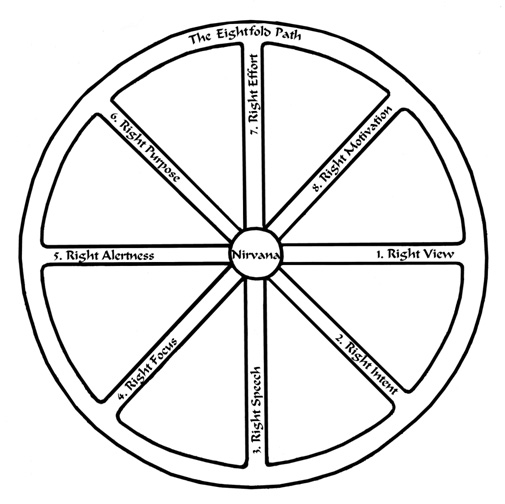

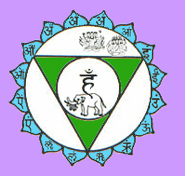
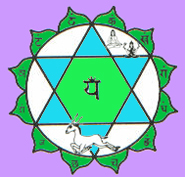
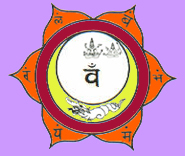
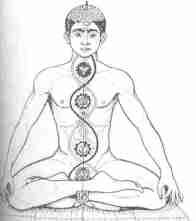 The serpents has two different colors like the two outer pillars in the Kabbalah Tree of Life, and they have the same interpretations as the Feminine and Masculine energies. Seven Lotus Flowers or Chakras, which are spiritual organs, are placed on the spine.
The serpents has two different colors like the two outer pillars in the Kabbalah Tree of Life, and they have the same interpretations as the Feminine and Masculine energies. Seven Lotus Flowers or Chakras, which are spiritual organs, are placed on the spine. Chakras in the Tree of Life
Chakras in the Tree of Life
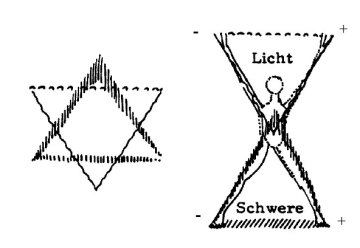 Microcosmic Man
Microcosmic Man




 Ketu and Rahu
Ketu and Rahu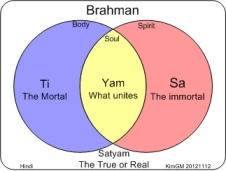

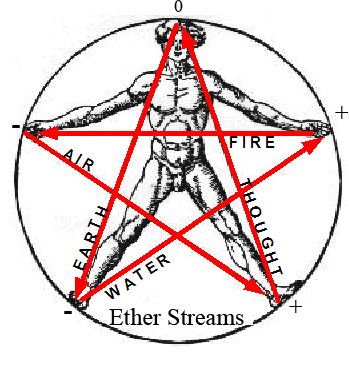


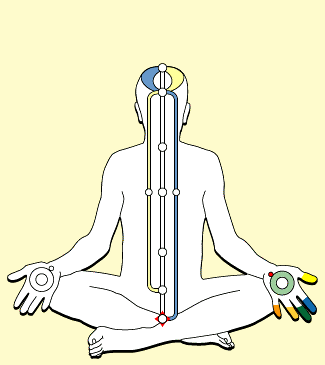




 Dambala and Aida Wedo – Tahiti
Dambala and Aida Wedo – Tahiti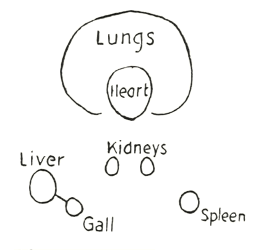
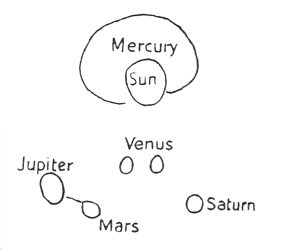
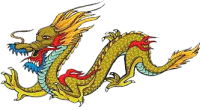
![kimgraaemunch [] GMail () com](https://kimgraaemunch.files.wordpress.com/2017/02/kimgraaemunch-g.png?w=210)












